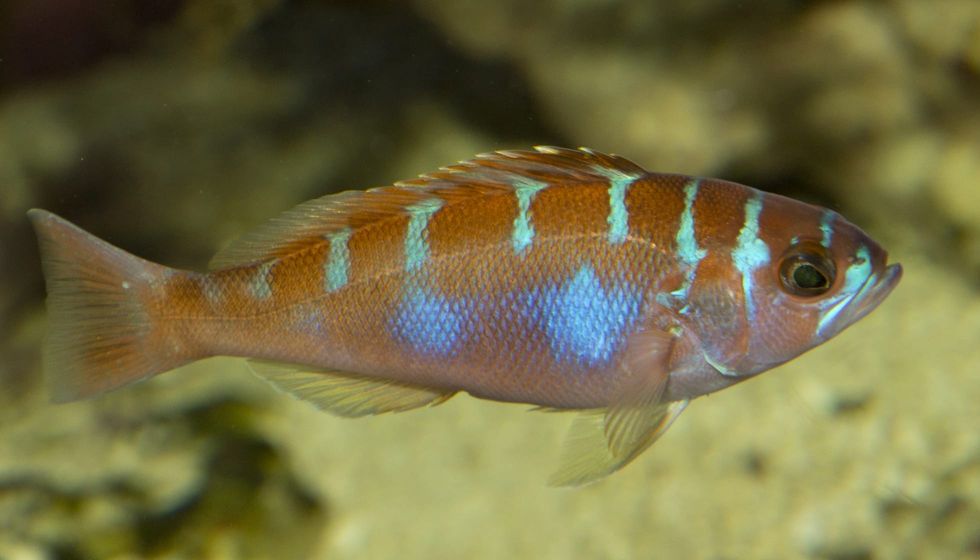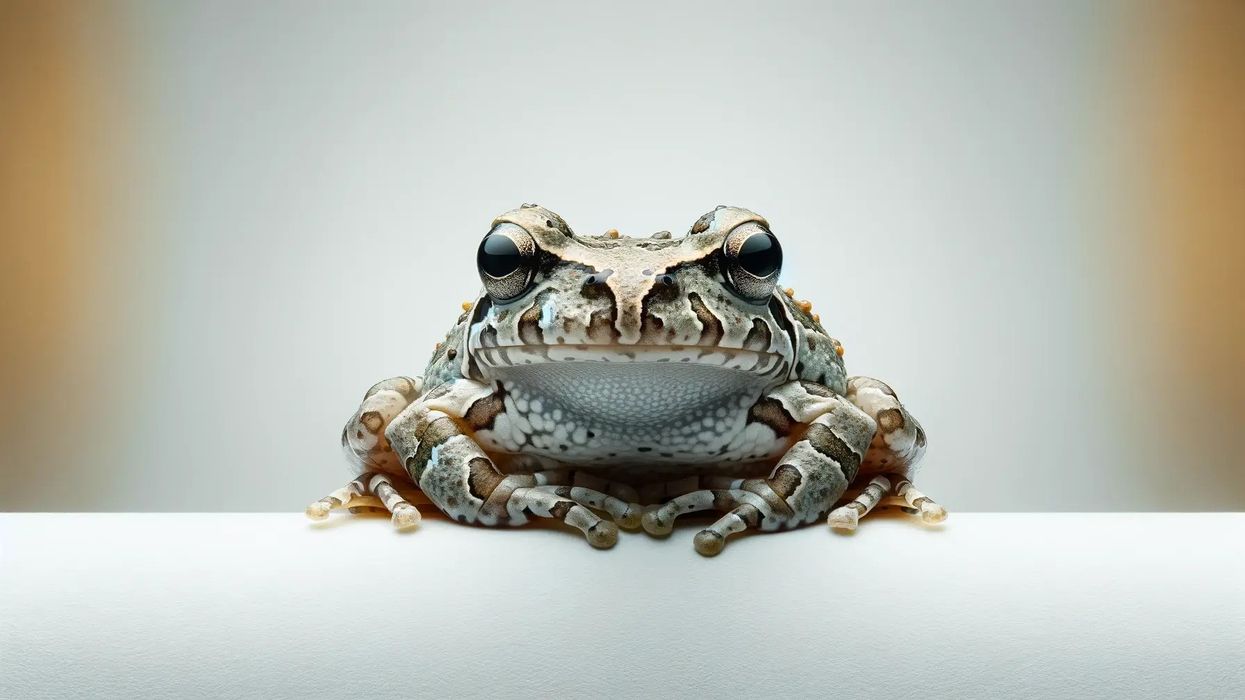The oceans of the world hold many mysterious and fantastic creatures. While some have gained mythical proportions like that of the megalodon shark, others are less so.
Here is a sneak peek of the most common and hardy fish from the Caribbean and Atlantic ocean, the Serranus Tortugarum, commonly known as chalk bass.
The Caribbean Sea calk bass is a nifty little fish that you are bound to find in your average saltwater tank aquarium. These creatures are great at hiding from their predators and even if you keep them in an aquarium, you will find them making potential hiding places in the tank itself.
It is no secret that the coral reef is a feature that is rich in bio-diversity. The chalk bass fish happens to be an essential part of the marine life in the reefs found in its geographical areas. Read on to find out more about this elusive creature that is known for its color as well as its habits.
You may also look at these lane snapper and mutton snapper facts for more interestingly written fact-rich articles.
Chalk Bass Interesting Facts
What type of animal is a chalk bass?
The chalk bass (Serranus tortugarum) is an aquarium fish and thrives well in saltwater tanks.
What class of animal does a chalk bass belong to?
Chalk bass is categorized a saltwater fish.
How many chalk bass are there in the world?
According to the IUCN list, the population of chalk bass is unavailable.
Where does a chalk bass live?
The chalk bass is also known as Serranus Tortugarum is originated from the Atlantic and the Caribbean sea. They are mostly found at the sea bottom near the reefs.
What is a chalk bass's habitat?
The brightly colored aquarium fish is originated from the Atlantic and Caribbean sea. A chalk bass can mostly be spotted at the bottom of the ocean at an average depth of 300 ft (90 m) and below.
This marine water adapted fish requires saltwater tanks to survive in households. The chalk bass does not demand much care, therefore can be an easy pet for any aquarist.
Who do chalk bass live with?
These friendly and peaceful species are known to be living under the reefs and do not show any signs of aggression towards other fish unless threatened.
However, if they are kept in aquariums then they do well with similar size fishes and they get easily friendly with them. If you are thinking of keeping a chalk bass at your home you can pair them with other basslets like dwarf angelfish, clownfish, butterfly fish, cardinalfish, chromis, tangs, fairy wrasse, anthias.
How long does a chalk bass live?
A Serranus tortugarum lives for at least one to two years on average.
How do they reproduce?
Chalk bass breeding is recognized as the pelagic spawners, which means that they will swim to the top and release their eggs, resulting in them floating on the surface of the water. In the wild, the eggs are known to drift with plankton and then settle on the reefs where they are hatched.
In the case of an aquarium this becomes a problem for the aquarist, as once this fish releases eggs on the surface, other fishes target them or they get sucked into the filtration systems.
If you want to successfully breed and raise the fish fry, then the immediate removal of the eggs from the tank to another smaller tank is necessary. Also, they should be fed with plankton, phytoplankton, rotifers, and small copepods after a few days, for them to grow in proper size.
For any beginner aquarist out there, do not put the baby chalk bass back with their parents on the same tank, they will get targeted and attacked by other fishes.
What is their conservation status?
According to the IUCN listing, the Serranus tortugarum commonly termed as chalk bass has been listed under the Least Concerned category. However, the exact population of this water species has not been denoted.
This fish is commonly cultured and kept in saltwater tanks in household aquariums and other large research institutions. A Chalk Bass does not demand much care and they are very adaptive in nature often seen to be friendly with other basslets.
Chalk Bass Fun Facts
What do chalk bass look like?

We've been unable to source an image of a Chalk bass and have used an image of its habitat. If you are able to provide us with a royalty-free image of a Chalk bass, we would be happy to credit you. Please contact us at hello@kidadl.com.
The fish is originated from the Caribbean sea, it belongs to the Serranidae family and is considered the smaller bass among its origin. The fish is shaped like a torpedo with impressive colorful patterns of orange and light blue. In some cases, the fish also appears in an orange body with a purple mid-section and electric blue vertical bands.
However, the exact appearance is not well defined as the appearance of the fish is prone to change owing to its exposure to light. It has got a great pigmentation that changes as an adaptive method to help it camouflage against predators.
Chalk bass appears sometimes in vibrant blueish, also in turquoise, with black stripes on its dorsal fin.
How cute are they?
One can say a chalk bass is very cute with its sleek and slithering body. The fish shows vibrant colors of orange and electric blue which accentuates its look for a domestic keep. A chalk bass is a great addition to your aquarium.
What makes a chalk bass cute and stand out as an aquarium fish is its nature as a peaceful fish. A chalk bass would find its hiding places under and around a live rock in the aquarium. In the wilderness, a chalk bass is mostly found at the depth of the sea near corals.
How do they communicate?
Fishes have a way of communicating through gestures and behavioral patterns. On the vast ocean, they have their marked territories and they mostly travel in groups. Fishes communicate by gestures and motions, as in the highly regimented synchronized swimming of schools of fish.
Some species use electrical pulses as signals, others use bioluminescence, while some are seen to release chemicals that can be sensed by smell or taste.
How big is a chalk bass?
A chalk bass is generally 3 in (7.6 cm), in size, however, as they are no picky eaters and never stop eating can grow larger in size when kept in an aquarium.
How fast can a chalk bass swim?
A Caribbean chalk bass is a peaceful marine basslet and they are not aggressive fish. They are found in hiding near corals at the bottom of the sea. They are generally seen roaming around their home and feeding on smaller fish or shrimp. They swim at their normal pace near the reef region in search of food.
How much does a chalk bass weigh?
Chalk bass does not weigh much as they are mostly kept in aquariums having a minimum tank size of 30-gallon capacity. However, their weight might vary as per their food intake. Depends on the diet aquarists follow to feed this carnivorous fish.
What are the male and female names of the species?
There is no definitive or listed name separately for a female and male chalk bass, as the fish falls under the categories of hermaphroditic species. A hermaphrodite is a species that is born with both male and female organs and can both reproduce.
What would you call a baby chalk bass?
A chalk bass baby is called a fry. The breeding process of chalk bass is very interesting as they fall under the category of pelagic spawners. In the wild, a chalk bass moves upwards towards the surface of the sea and lays its eggs, then they float and get accumulated in the corals and then hatches.
A beginner aquarist who has willfully taken marine culture as a hobby must know that chalk bass breeding in domestic captivity requires very detailed nurturing. The details of the breeding have been mentioned under the breeding subsection of this article.
What do they eat?
Generally, a chalk bass, Serranus tortugarum belonging to the Animalia kingdom is not a picky eater and can thrive well on smaller sized basslet, or smaller sized shrimps. Nevertheless, it might trouble wannabe aquarists about the proper diet for this fish.
Chalk bass falls under the carnivore category of the food chain and they can eat pellet food or frozen foods, you may also feed adult brine shrimp or mysis shrimp, chopped mollusks, crustacean flesh and flake foods, squid, and krill and ensure that the diet contains high levels of protein to help them get perfectly nourished.
Are they poisonous?
There are a number of Western Atlantic fish that are marked as poisonous, however, chalk bass (Serranus tortugarum) is a friendly and peaceful fish and is not listed as poisonous.
Would they make a good pet?
For all beginner aquarists out there, if you are planning to pet fish, chalk bass is a great start.
They do not require constant care, they are not aggressive and are friendly with other fishes in the tank as well. All they need is their secluded live rock to make these Atlantic chalk bass feel home, as in the wild they lived at the bottom of the sea near the reef.
They are hardy fish and can feed on shrimp, mainly Mysis Shrimp, Brine Shrimp, or any other frozen fish food.
Did you know...
A research study conducted by Dr. Mary Hart, of the University of Florida on the hermaphrodite nature of the fish, concluded that the fish could consistently sway between different sex roles to ensure that there was no shortage of eggs.
Are they reef safe?
A Chalk Bass is a model citizen when it comes to corals and reefs. They pretty much adapt to the environment whether it's in the wild or an aquarium. Corals, clams, and starfish are safe when kept with the Chalk Bass. Also, fishes like Porcelain Anemone crab and clownfish dwell well with a chalk bass.
Chalk bass tank mates
Since the chalk bass is not very aggressive, they can be paired with other basslets like Dwarf Angelfish, clownfish, butterfly fish, cardinalfish, blue Chromis, tangs, fairy wrasse, anthias.
Here at Kidadl, we have carefully created lots of interesting family-friendly animal facts for everyone to discover! For more relatable content, check out these brown trout facts and Atlantic cod facts for kids.
You can even occupy yourself at home by coloring in one of our free printable chalk bass coloring pages.









